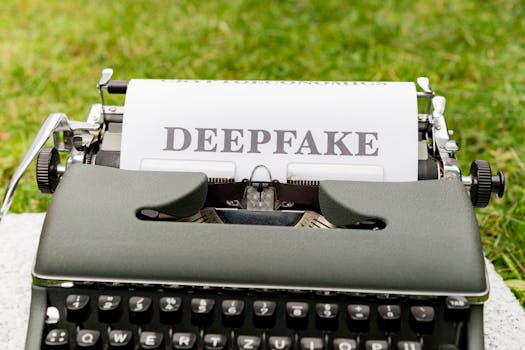Advanced Methods for Detecting Deepfakes and Protecting Against Online Disinformation
In an era where technology is rapidly evolving, the rise of deepfakes has emerged as a significant concern for individuals, organizations, and governments alike. Deepfakes, which utilize artificial intelligence to create hyper-realistic but fabricated audio and video content, pose a serious threat to the integrity of information. As these technologies become more sophisticated, so too must our methods for detecting them and protecting against the broader implications of online disinformation and manipulation.
The Growing Threat of Deepfakes
Deepfakes have gained notoriety for their potential to mislead audiences and manipulate public opinion. According to a report by Deeptrace, the number of deepfake videos online doubled from 2018 to 2019, with over 14,000 deepfake videos identified by the end of 2019. This alarming trend highlights the urgent need for effective detection methods.
Understanding Deepfake Technology
Deepfake technology primarily relies on deep learning algorithms, particularly Generative Adversarial Networks (GANs). These networks consist of two neural networks—the generator and the discriminator—that work against each other to create realistic fake content. The generator creates fake images or videos, while the discriminator evaluates them against real content, leading to continuous improvement in the quality of the fakes.
Advanced Detection Techniques
As deepfake technology evolves, so do the methods for detecting it. Here are some advanced techniques currently being employed:
- Machine Learning Algorithms: Researchers are developing machine learning models that can analyze video frames for inconsistencies, such as unnatural facial movements or mismatched lip-syncing. For instance, the University of California, Berkeley, has created a deepfake detection tool that can identify manipulated videos with over 90% accuracy.
- Digital Watermarking: This technique involves embedding a unique identifier within the original content, making it easier to verify authenticity. Companies like Truepic are pioneering this technology to ensure that images and videos are genuine.
- Blockchain Technology: By using blockchain to create a tamper-proof record of content, organizations can verify the authenticity of videos and images. This method is being explored by various media companies to combat misinformation.
- Biometric Analysis: Some researchers are focusing on analyzing biometric markers, such as eye movement and facial expressions, to detect deepfakes. These subtle cues can reveal discrepancies that are often overlooked by traditional detection methods.
Case Studies: Successful Detection in Action
Several organizations and initiatives have successfully implemented advanced detection methods to combat deepfakes:
- Facebook’s Deepfake Detection Challenge: In 2019, Facebook launched a competition to encourage researchers to develop better detection algorithms. The challenge attracted over 1,000 teams and resulted in significant advancements in detection technology.
- Deepware Scanner: This mobile application allows users to upload videos for analysis. It uses AI to detect deepfakes and provides users with a confidence score regarding the authenticity of the content.
- The Deepfake Detection Challenge by Kaggle: This initiative provided a dataset of deepfake videos to data scientists, leading to the development of new algorithms that improved detection rates significantly.
Protecting Against Online Disinformation
While detection is crucial, proactive measures are equally important in combating online disinformation. Here are some strategies that individuals and organizations can adopt:
- Media Literacy Education: Teaching individuals how to critically evaluate sources and recognize signs of manipulation can empower them to discern fact from fiction.
- Verification Tools: Utilizing tools like Snopes, FactCheck.org, and Google Reverse Image Search can help verify the authenticity of content before sharing it.
- Collaborative Efforts: Governments, tech companies, and civil society must work together to create frameworks for identifying and mitigating the spread of deepfakes and disinformation.
Conclusion
The rise of deepfakes presents a formidable challenge in the digital age, threatening the very fabric of trust in media and information. However, through advanced detection methods and proactive strategies, we can combat the spread of disinformation and manipulation. As technology continues to evolve, so too must our approaches to safeguarding truth and integrity in the online world. By fostering media literacy, leveraging innovative detection techniques, and promoting collaboration among stakeholders, we can create a more informed society capable of navigating the complexities of digital content.
